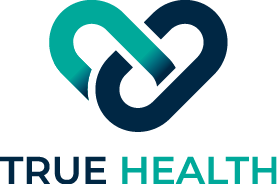The Science of Massage and Sleep: Can It Improve Insomnia?
Sleep is a fundamental aspect of health, yet millions of Australians struggle with insomnia and poor sleep quality. + Scientific research has shown that massage can enhance relaxation, reduce stress hormones, and improve sleep cycles, all of which contribute to better, more restorative sleep.
How Massage Therapy Affects Sleep
Massage works by activating the parasympathetic nervous system (PNS), which is responsible for the body’s rest-and-digest functions. When the PNS is activated, heart rate slows, muscles relax, and the body enters a state of deep rest, making it easier to fall asleep.
Key physiological effects of massage that promote better sleep include:
- Lowering Cortisol Levels – High cortisol (the stress hormone) disrupts sleep cycles. Massage therapy has been shown to reduce cortisol levels, helping the body unwind before bedtime.
- Increasing Serotonin and Melatonin Production – Serotonin is a precursor to melatonin, the hormone that regulates sleep. Studies suggest that massage increases serotonin levels, indirectly boosting melatonin production.
- Improving Circulation and Muscle Relaxation – Tight muscles can lead to discomfort and restlessness at night. Massage increases blood flow and promotes muscle relaxation, easing tension that may contribute to sleep disturbances.
Scientific Evidence Supporting Massage for Insomnia
A study published in the International Journal of Neuroscience found that massage therapy significantly improved sleep quality in individuals suffering from chronic insomnia. Another study in the Journal of Clinical Psychiatry revealed that individuals with depression and anxiety who received regular massages experienced deeper, more restorative sleep.
Best Massage Techniques for Better Sleep
Massage therapy can be tailored to target the nervous system and induce relaxation, making it a valuable tool for improving sleep quality. The most effective techniques include:
- Swedish Massage – Uses gentle, rhythmic strokes to relax the nervous system and reduce tension.
- Aromatherapy Massage – Incorporates essential oils like lavender and chamomile, which are known to promote sleep.
- Reflexology – Focuses on pressure points in the feet that are linked to relaxation and improved sleep cycles.
- Craniosacral Therapy – A light-touch technique that targets the head and spine, helping to balance cerebrospinal fluid and induce relaxation.
How to Incorporate Massage into Your Sleep Routine
If you struggle with insomnia or poor sleep, integrating massage into your bedtime routine can promote long-term improvements in sleep quality.
- Schedule regular evening massages to train your body to enter a relaxed state before bed.
- Use self-massage techniques such as gentle neck and shoulder massages before sleeping.
- Combine massage with sleep hygiene practices, including limiting screen time, reducing caffeine intake, and maintaining a consistent bedtime schedule.
Massage therapy is a safe, natural, and effective solution for improving sleep quality. By reducing stress, relaxing muscles, and promoting serotonin and melatonin production, it can help you achieve deeper, more restorative sleep—without the need for medication.


